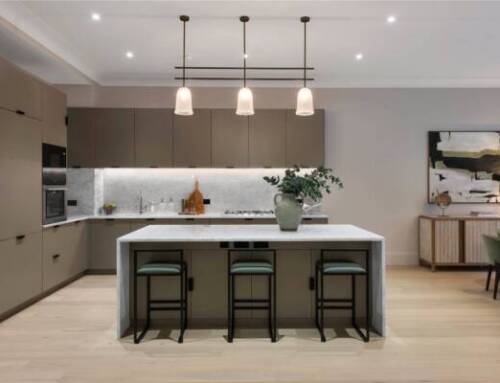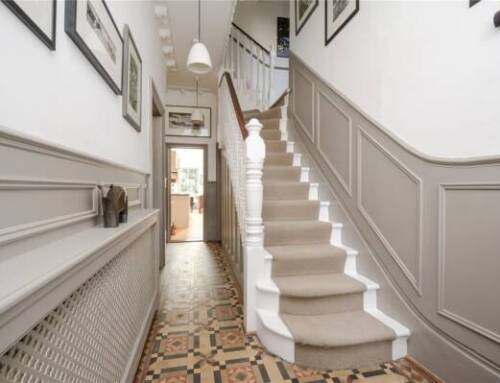The Four Types of Loft Conversion
Loft conversions are very famous within the United Kingdom and particularly in London, since they leverage the empty extra space on your property’s roof and remodelling it into a functional room, like a bedroom, office, study or playroom, gym, or cupboard space adding both extra space and value to your property. There are four main types of loft conversion found in UK homes. To make your mind up of what variety of loft conversion will suit you best, you must consider several factors:
- Roof structure
- Budget
- Height
- Space
- Felt (roof might have felt under the tiles or it can be fully weatherproof)
- Permitted development rights
If you have some unused extra space, it’s pondering building into it to form that in-demand extra space. However, the installation of loft conversion could be a complicated process because of the big amount of labour involved, permitted development rights and difficulty in finding the right matching type of loft. Not all lofts are suitable for a loft conversion. Working with a talented architect can facilitate you to understand how to draw the most effective plans for your home. Before going too far into planning your loft conversion project, we advise you to Get a FREE Consultation with our expert team.
There are four main types of loft conversion: Velux loft conversion, Dormer loft conversion, Hip-to-Gable loft conversion and Mansard loft conversion.
Velux loft conversions
Velux loft conversions are by far the most cost-effective and least disruptive alternative, as you will not have to make any changes to the form or structure of the roof. Instead, it’s simply a case of adding in skylight windows, laying down a correct floor, and adding a staircase to create the area habitable. However, you will need to own sufficient roof space already without having a loft extension for this type of loft conversion.
Velux is truly a window manufacturer and also the leading window brand for these kinds of windows utilized in Velux loft conversion, that is why this loft conversion type is named after them. A different way to refer to this loft conversion is as a Rooflight loft conversion. The regular roof structure remains intact and the windows then slot in at an angle to the roof, instead of vertically, facing towards the sky fitting to the existing roofline. Not only is the build time quicker on this style, but due to the minimal remodellings, the prices are considerably lower. A Velux loft conversion works better where there is plenty of headroom accessible, or if obtaining planning permission may prove uncertain because in most cases, planning permission is not a requirement for this type of loft conversion, but House Renovation London will always advise based on our FREE site survey.
In most situations loft conversions can last anywhere from 6 to 8 weeks, depending on the range and amount of development required. However, Velux loft conversions are the most straightforward to develop and can usually be built within only 4 weeks.
Pros:
- Up to 25% cheaper than other types of loft conversion
- More likely to be allowed in conservation areas
- Lots of room for storage if you use your eaves creatively
Cons:
- Needs 2.25m of head height in the middle of the room, leaving space to carefully build up the floor
- Unlike other types of conversion, it doesn’t generate any more useful space
- Limited headroom means that stairs may have to appear into the middle of the room
- May sometimes need planning permission if windows are at the front
Dormer conversions
A dormer loft conversion is an extension that stretches beyond or above a surface from the slope of the roof. Dormers, in particular flat-roof dormers, are the most common type of conversion. They are fit for pretty much any property with a sloping roof. A dormer loft conversion is the best option for a London homeowner who wants to build additional extra space in the house.
Dormer conversions are less expensive than mansard or hip-to-gable conversions, yet will provide a good deal of extra headroom and extra space that profits from additional sunlight reflected inside. Flat Dormer loft conversions are one of the most prevalent types of loft conversions and also one of the most cost-effective. Not only that, but it provides great volumes of internal space in comparison with most other styles.
The dormer loft is built vertically on top of a previously existing sloping roof, usually at the rear of the property and in the vast majority of cases planning permission is not required for a Dormer loft conversion. However, House Renovation London reviews each case on an individual basis by providing a FREE Site Survey, as sometimes this may be a requirement. It will also require a moderately modest building works with vertical walls and a horizontal ceiling.
Pros:
- Adds useful headroom in a narrow loft
- Leaves upright walls and flat ceilings
- Creates a massive amount of additional internal extra space
- Good sunlight and ventilation
- Low-priced compared to other choices
- Suitable for most UK house styles
Cons:
- Not always the most aesthetically appealing choice
Hip-to-Gable Loft Conversions
Hip-to-gable conversions will only work on detached or semi-detached houses because it requires a free sloping side roof. If you have got a detached house with sloping roofs on either side, you can develop on both of these to produce an even more roomy double hip-to-gable loft extension. This type of conversion work by extending the sloping roof at the side of your property outwards to form a vertical wall, creating more internal loft extra space. Owners of detached and semi-detached properties frequently choose to convert their loft using the Hip-to-Gable design. This extends the sloping sides of the roof outwards, serving as a replacement for the existing sloping roof with a vertical wall that leads the same height, utilising a smart solution to maximise their extra space.
Hip-to-Gable loft conversions tend to adjust the outline or structure of the roof which lead to requiring planning permission. There are occasions when it will not be needed, which House Renovation London will assess during the FREE site survey.
Pros:
- Aesthetically pleasing, as it blends in with the existing home
- Can be combined with a rear dormer loft for maximum space
- Suitable for bungalows and chalets
Cons:
- Not appropriate for mid-terrace homes
- More expensive than a dormer conversion
- May appear imbalanced if your next-door-neighbour hasn’t had one
Mansard Loft Conversions
Mansard extensions run along the full length of your house’s roof and will adjust the angle of the roof slope, making it almost upright. Located at the rear of the property, a Mansard loft conversion demands the most work due to the quantity of construction required. These tend to be the most expensive type of conversion but will result in a notable amount of extra space. Commonly, the owners fancy a flat room Mansard style due to it being the most cost-effective. Mansard conversions are suitable for most property types in the United Kingdom and particularly in London, where they can be observed in many traditional properties, including terraced, semi-detached and detached houses.
They have a steep inward sloping angle of 72 degrees (can be bent) with little dormer windows. The changes done to the structure of the roof during a Mansard loft conversion are normally categorised as a roof instead of a wall by local authorities, also it requires structural work and the roof shape will be reconstructed. which means planning permission will be expected. However, House Renovation London will provide expert advice based on our FREE Site Survey.
Mansards loft conversion became very widespread in London due to the benefit of maximising the attic area and the ability to make use of all roof extra space. The huge benefit a Mansard loft conversion offers is a notable improvement in extra space, and the attractive design of the small dormers which house the windows, offset the almost vertical alteration. These types of loft conversion could be the favoured option in sensitive spaces or where the initial framework of the property is the available alternative to preserve the property’s appearance.
Pros:
- Regarded as more aesthetically pleasing than a dormer
- Blends well into older properties
- More headroom than any other type of conversion
- Tends to allow more light into your loft
Cons:
- Almost always requires planning permission
- Construction time can be long
- More expensive than other types of loft conversion
Will I need planning permissions?
Multiple loft conversions are supported by permitted development rights and will not demand planning permission. Nevertheless, some structures or if you live on designated land or have a particular type of property that is complex to convert, you may not be covered by permitted development. You can discover more about whether you’ll need planning permission, and any additional permissions you might need, by booking a FREE site survey from our experienced teams of builders and architects.
How Much Does a Loft Conversion Cost?
Your loft conversion cost will depend on various circumstances including the style of loft conversion you prefer, the present roof structure, the size of your property, specification and the extent of remodelling work or modifications needed to accommodate the new staircase.
A loft conversion project goes through several stages of building, such as planning, permission, regulation, building, conversion. Providing individual prices for each phase is difficult, as many construction companies will not separate costs for individual phases, which form part of the main build. However, for an accurate quote for your project, you can get a FREE consultation with our qualified builders and architects.
How do I choose a builder or architect?
When choosing any construction company for your loft conversion project, it is best to start with a reference. Talk to your friends and family and have a look online to see if there are any local websites offering suggestions on particular builders. If you have spotted any loft conversions in your neighbourhood and you feel comfortable knocking on some doors, ask your neighbours who they used and how they found them. You can also get a FREE consultation from our experienced builders and architects. You can always ask to see some samples of previous work when speaking with a builder or architect. As the most well-known construction companies, House Renovation London will be happy to provide you with photographs and examples of our work.



